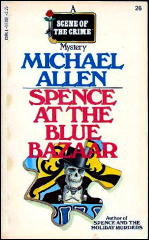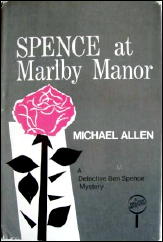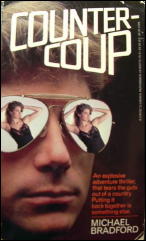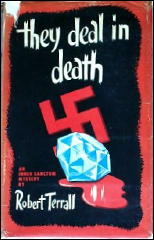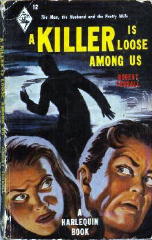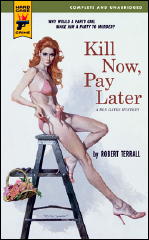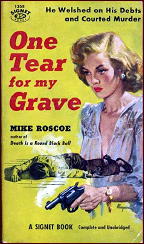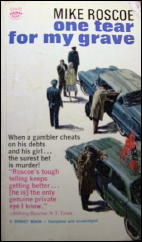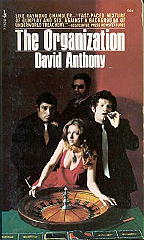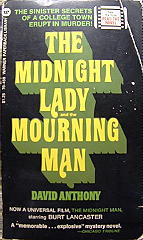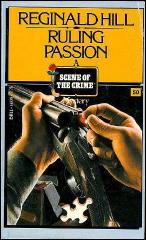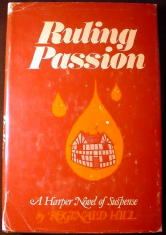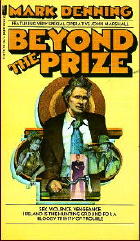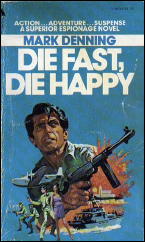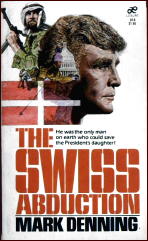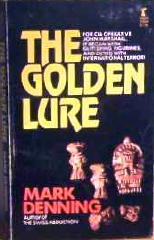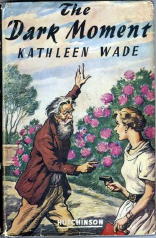FRANK G. PRESNELL – No Mourners Present.
Dell 646, paperback reprint; no date stated, but circa 1953. (Cover by Robert Stanley.) Hardcover edition: William Morrow & Co., 1940.
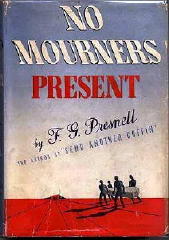
The jacket of the hardcover edition suggests that the book may have been published as by “F. G. Presnell,” but any final judgment on that would have to wait until the title page has been examined, the final and only arbitrator on matters of bibliographic importance such as this.
Looking for more information about Mr. Presnell (1906-1967), I’ve not found anything on the Internet that either discusses him or his three mysteries in any way that’s significant. At the moment, all I can tell you about him personally is what Al Hubin says in Crime Fiction IV:
“Born in Mexico; educated at Antioch College and Ohio State Univ.; designer and engineer; lived in Ohio for 40 years, then in Los Angeles.”
Which is a start, but what it doesn’t say is why Mr. Presnell wrote two good books in 1939 and 1940, both with high-powered (and hard-boiled) practicing attorney John Webb, but then not another novel until 1951, and alas, Webb is not in it.
For the record, here is a list of Presnell’s only contributions to the world of crime fiction:
Send Another Coffin. Morrow, hc, 1939. Detective Book Magazine, Winter 1939-40. Handi-Book #39, pb, 1945.
No Mourners Present. Morrow, hc, 1940. Dell 646, pb, 1953.
Too Hot to Handle. M. S. Mill / Morrow, hc, 1951. Dell 593, pb, 1952.
I had not known until I looked it up, but a movie was made of Send Another Coffin, one I’ve never seen, but I believe I shall have to purchase it. The title of the movie is Slightly Dishonorable (United Artists, 1940), and besides Pat O’Brien and Ruth Terry, whom you see below, as the two leading characters – I’ll get to that in the next paragraph – Edward Arnold and Broderick Crawford are also in the film, big names both.
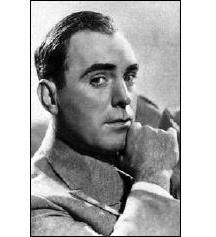
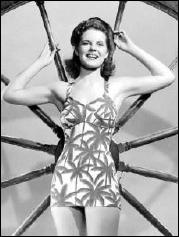
These photos were taken at different times, and neither time may coincide with the movie, but they will give you an idea at least of what Hollywood thought the characters looked like. (Since I was reading the Dell paperback, you can tell what I thought they looked like, when I was reading it. The scene on the cover, which you’ll see somewhere below, is in the book.)
In the movie, Ruth Terry is credited only as “Night Club Singer,” but in the book she has a name: Anne Seymour. In the followup book, the one at hand, she has a brand new name, that of Anne Webb. A substantial part of No Mourners Present is the mystery novel, of course – and I’ll get to that in moment too – but another significant portion of it, one mixed up one with the other, concerns the domestic life of the two newlyweds.
As it happens, the tough attorney John Webb is deeply in love with his wife. That much is apparent right away. He also seems to wonder how it is that he is so lucky to have her in love with him. Her background as a singer seems to be a concern to him as well: how well will she fit in with the wealthy set that he sometimes hangs around with?

Without revealing too much, I think Anne Webb is smarter in many ways than he thinks she is, and that she can hold her own in his world very well indeed, and maybe even better. John has nothing to worry about in that regard.
Of course there is no way of knowing. Two books with the Webbs, and that was all there were. As for Mr. Presnell, perhaps we must assume that the war intervened, and life and a family and earning a living.
The town in which John Webb as an attorney also has considerable political clout is not named, I don’t believe, and since Hubin doesn’t suggest a setting (I just checked) neither do I believe it is a matter of my missing it.
With very few preliminaries, the mystery gets into action right away, with Jake Barman’s murder taking place on page 15, one page after Webb very nearly slugs a radio news commentator for a remark he makes about Anne. Anne takes him to task reproachfully afterward. “Listen,” she says. “You’ve got to stop hitting people.”
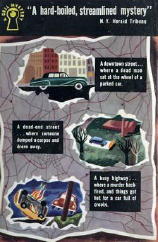
This fellow Barman is a partner in a building firm, or he was, and he also had ambitions of being elected governor. He is on the outs with his wife, however, which is a liability, especially since everyone knows that Julie Gilson, his secretary, is also his mistress. She’s also the leading suspect as well, especially after she disappears completely from sight after Barman’s death.
Without a client, Webb is only incidentally involved until Julie’s brother comes to town are hires him to help protect her name. Once hired, Webb goes immediately into Perry Mason mode. See page 40, and you will see exactly what I mean.
If you’re only in your 30s or 40s, it may not realize it – it’s probably too long ago – but in 1940 if your company bucked either the gangs or the unions, people were maimed for life. This is the sort of thing that gets Webb’s blood boiling as well. Here’s a long quote from page 45. He’s talking to the man he’s working for in charge of operations at a chain of cleaning establishments.
“… In the second place, even if I didn’t give a good Goddamn whether Acme ever makes another nickel or not, I’ve got a front to keep up. Why do you think people pay me fancy prices to do things for them? Because they think I’m going to lie down and let myself be walked on? Like hell they do! They hire me because they know they’ll get grade-A effort, anyhow. And how come I usually give them results besides? Because the other side knows they’ll sweat for anything they get. […] If anybody from this damn cleaning-and-dyeing-trades racket comes around here, you tell ’em to talk to me.”
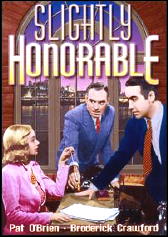
I mentioned Perry Mason a short while back. Perry was tough in his early days, but not as tough as John Webb. Here is a portions of his thoughts, his philosophy of action, you might say, taken from page 61:
Cabash was tough and vicious, but he wasn’t smart. He’d start trying to bluff us, and when he did, it was up to me to give him a chance to do nothing but wonder what hit him. I didn’t know how I was going to work it, but you can always figure out ways if you’re willing to use them.
As a word of warning, the book is a little too talky to be this tough all the way through, but when it is, it is. It earns high points as a detective novel as well, or at least it did with me, with plenty of twists and turns in the plot to keep Webb’s brain (and mine) working in as finely-tuned a fashion as his brawn.
The solution is not nearly as finely worked out as one of Perry Mason’s, though, containing as it does one small gap I haven’t quite yet figured out.
Nonetheless, even if the mystery itself is not a classic that anyone will remember for very long, if there’s any in mourning at the moment, it’s me, wishing that there were a next one to read, and as much for the characters, I would advise you, as for anything else. Sadly to say, one more time, there wasn’t a next one to read at the time, and there isn’t now.

